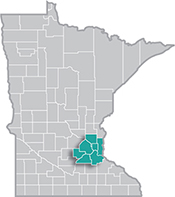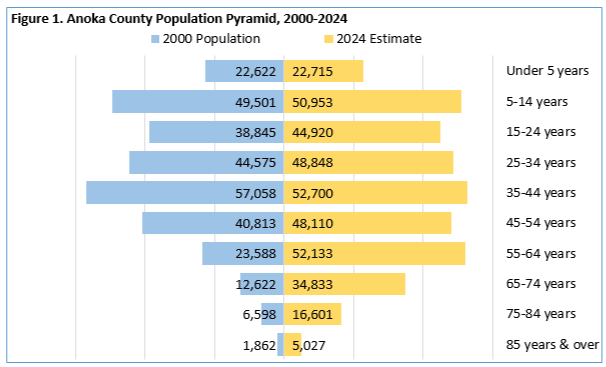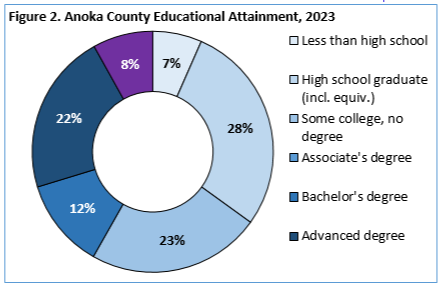 The Minneapolis-St. Paul metropolitan area is a national leader in finance, advanced manufacturing, agriculture and retailing.
The Minneapolis-St. Paul metropolitan area is a national leader in finance, advanced manufacturing, agriculture and retailing.
Medical devices, electronics and processed foods are strong suits recognized globally.
Want the freshest data delivered by email? Subscribe to our regional newsletters.
Imagine that you’re looking for a comprehensive report on your local county.
7/23/2025 11:49:31 AM
Tim O'Neill
Imagine that you’re looking for a comprehensive report on your local county. In this scenario, you’d like data on everything from population trends and projections to educational attainment and labor force statistics to occupations in demand and wage data. All these individual pieces of data are available online, but you’re in a crunch for time. Luckily, DEED’s Labor Market Information Office has convenient County Profiles with all this information ready to go!
Here are those profiles for the seven counties in the Twin Cities Metro Area:
While there is certainly more detailed data that can be found from DEED’s labor market data tools, the U.S. Census Bureau, the Minnesota State Demographic Center and other sources included in the county profiles, the profiles offer up an excellent overview of data on population, education, labor force, commuting, income, cost of living, industry employment and more.
Let’s use Anoka County’s profile as an example. From page 1, we can see that Anoka County had a population of 376,840 people in 2024, making it Minnesota’s 4th most-populated county. Between 2000 and 2024, Anoka County’s population grew by 26.4% (+78,756 people), faster than both statewide population growth during that time (+17.8%) and the Metro Area’s growth (+21.1%). Like the state and Metro Area, Anoka County’s most significant growth during this time was for those older age cohorts. For example, the county’s population between 65 and 74 years of age grew by 176.0% (+22,211 people) between 2000 and 2024 (Figure 1).

Page two of Anoka County’s profile highlights educational attainment. As of 2023, the overwhelming majority of the county’s population 18 years of age and older (93.4%) had at least a high school diploma or equivalent. About three in every ten (29.7%) had a bachelor’s degree or more (Figure 2).

While the share of Anoka County’s population with a bachelor’s degree or more was less than Minnesota’s overall (36.1%), the last page of the county’s profile reveals that this isn’t necessarily a concern. With nearly 22,700 jobs, Manufacturing is Anoka County’s largest-employing industry sector. Occupations in this sector typically do not require four-year degrees and with an average annual wage of $91,412 in 2024, Manufacturing workers in Anoka County typically earn more than workers overall in the county ($65,222). Page five further reveals that the median household income in Anoka County, at $98,764, was higher than Minnesota’s overall, at $87,556, in 2023.
Jumping around between just a few pages of Anoka County’s profile, we got a quick understanding of the county’s population and aging trends, educational attainment, industry employment and income. In the months ahead, we’ll keep digging into what makes the Metro Area’s seven counties unique. In the meantime, keep checking out Minnesota’s 87 county profiles for quick and comprehensive data on your local area.
To discover more about your county in the Metro Area, contact Tim O’Neill, Labor Market Analyst, at timothy.oneill@state.mn.us.